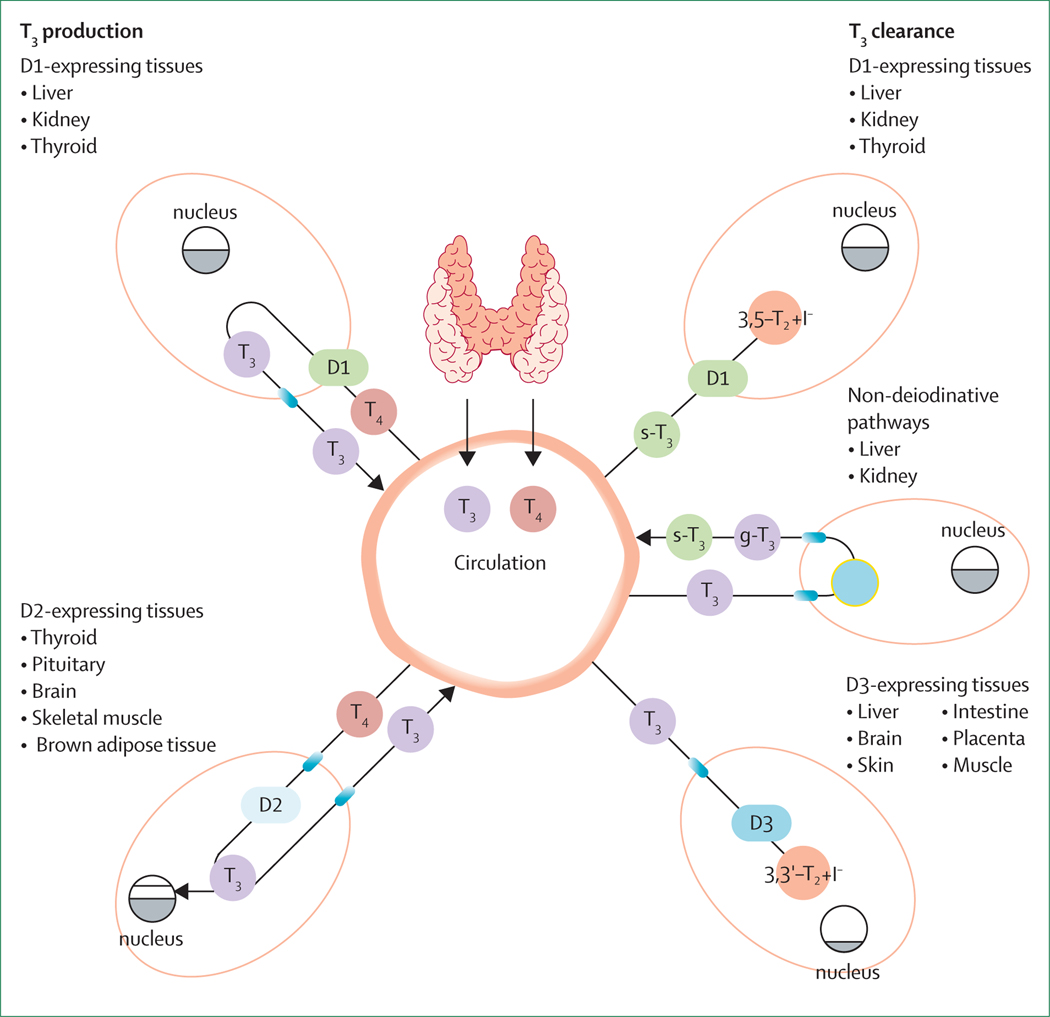Figure: Schematic representation of T3 production and clearance in humans.
The thyroid gland secretes T4 and T3 with a molar ratio of about 14:1 and accounts for 20% of total daily T3 production.17 The rest of T3 body requirement derives from T4-to-T3 conversion by D1 and D2. D1 is mainly expressed in the liver, kidney, and thyroid gland and is located in the cell membrane. Almost the total amount of D1-derived T3 is released in the systemic circulation. D2 contributes to a lesser extent to serum T3 concentrations and operates in the intracellular space within the endoplasmic reticulum. D2-expressing tissues (namely, the thyroid and pituitary glands, brain, skeletal muscle, and brown adipose tissue) use D2 to increase their nuclear T3 concentrations on top of the serum-derived amount of T3.17,18 D3 is responsible for T3 inactivation through the conversion of 3,5,3’-T3 to 3,3’-T2. D3 is an intracellular enzyme expressed in the liver, brain, skin, intestine, placenta, and muscle. These tissues use D3 to lower the T3 nuclear concentration in response to specific cell needs. Liver and kidney can inactivate T3 in a non-deiodinative way by sulpho-conjugation (s-T3) or glucuronidation (g-T3) within the microsomes. S-T3 is released in the systemic circulation and becomes a strong substrate for D1, which converts it to the inactive 3,5-T2 sulphate and releases one iodide ion for the subsequent utilisation in the thyroid hormonogenesis.20 Grey area within nuclei represents nuclear T3 content. D1=type 1 deiodinases. D2=type 2 deiodinases. D3=type 3 deiodinases. T3=tri-iodothyronine. T4=thyroxine.

